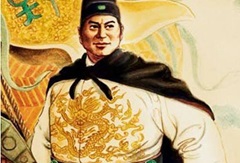Written by: Marzia Bilwani
Posted on: April 30, 2018 |  | 中文
| 中文
Faiz Mahal, Khairpur, Sindh
This time on our family trip to Sindh, we decided to explore a lost jewel; the Faiz Mahal in Khairpur. Capital of the princely state of Khairpur and present—day Khairpur District, the city of Khairpur was founded in 1783 by Mir Sohrab Khan Talpur. The Talpurs came to power after defeating the Kalhora Dynasty and ruled over Khairpur for three centuries (1783 to 1955). The Faiz Mahal was built in 1798, to serve the needs of the royal family and act as the chief building for the Talpur monarchs.
At the time of independence, Khairpur acceded to Pakistan on the condition that it could maintain autonomy over certain areas. However, in 1955, a change in leadership led to the abolition of all princely states, and Khairpur became a part of Sindh.
After a journey of around six hours from Karachi, we entered a small village near Ranipur. Another hour of travelling, and we reached Khairpur. The outskirts of the city were dotted with date trees, making for a beautiful change of scenery from the desert-like vegetation we had gotten used to after Hyderabad. Further inside the city, signs of rapid urbanization were visible. After driving through the heart of the city, we finally arrived at the Faiz Mahal.
As we entered through the rear gate of the Mahal, a small mosque with faded white paint greeted us, offering a faint view of the red domed towers opposite. The outer areas seemed abandoned, and for a moment I wondered if like other historical buildings in Pakistan, the Faiz Mahal had also been neglected. But this was not so. As I walked in and saw the frontal view of the Mahal, I was absolutely stunned by its magnificence. Despite the hot sun beating down our backs, we could not help but admire the pink, white and yellow palace from every angle. The symmetrical archways, domed towers and arched balconies, contrasted against the urban landscape of present-day Khairpur. While coming to this city, I would have never imagined that such a beautiful architectural treasure could be found here. The building transported me to life of the royalty in the 18th century.
Towards the front lay a vast and lush green garden, with flowers lining the edges. While my family members were taking photographs of the building, I spotted an aged caretaker, and asked him a few questions about the Mahal. He told me that the garden was previously a haathi khana, where the royal elephants and horses of the rulers were stationed. I immediately pictured an elephant with an intricately designed howdah. He also mentioned that the family of the last Talpur monarch now resides in Karachi. Gesturing towards the entrance, he said, “The interior of the Mahal is even more beautiful.”
Leading towards the entrance was an open porch, held up by beige and white pillars with intricate detailing. Deer heads were mounted on the walls, signifying the royal extravagance from another era. The symmetry of the corridor was made striking by the sunlight falling through the arches.
Moving inside, I set foot on the scarlet carpet and stood in complete awe. The inner columns and archways had intricate motifs, whilst golden frames containing oil paintings of the rulers in all their glory, had been hung up on the walls. On some walls, old photographs had been hung up to narrate the rich history of the Mahal. Real lion and tiger skins were preserved in glass cases, indicating the exotic tastes of the monarchs. Large chandeliers hung from the adorned ceiling, brightening up the entire space.
In one corner was the entrance to the dining area, which consisted of a massive table, easily capable of accommodating around 40 people. As I looked up towards the ceiling, I was amazed by the ostentatious gold-plated detailing, which contrasted strikingly against the white. Sculptures made by masters of the craft had been placed on ornately decorated pedestals, with lamps which further enhanced the magnificence of the room. There were rooms upstairs too, with large doors that offered a view of the ground floor. However, we were not allowed to view these. After hearing about our long journey, the caretaker arranged tea and biscuits for us, and our weariness melted away due to the warmth of his hospitality.
Although the Mahal stands unused now, it once symbolized power in the region. To some extent, it still does, by serving as a reminder of the glorious days of the past. Once upon a time, the royal Talpur family resided here, yet this architectural treasure is barely known to our public.
You may also like:

Role of the Silk Road in promoting Cultural Connectivity between Islamic & the Chinese Civilizations
(December 09, 2024)